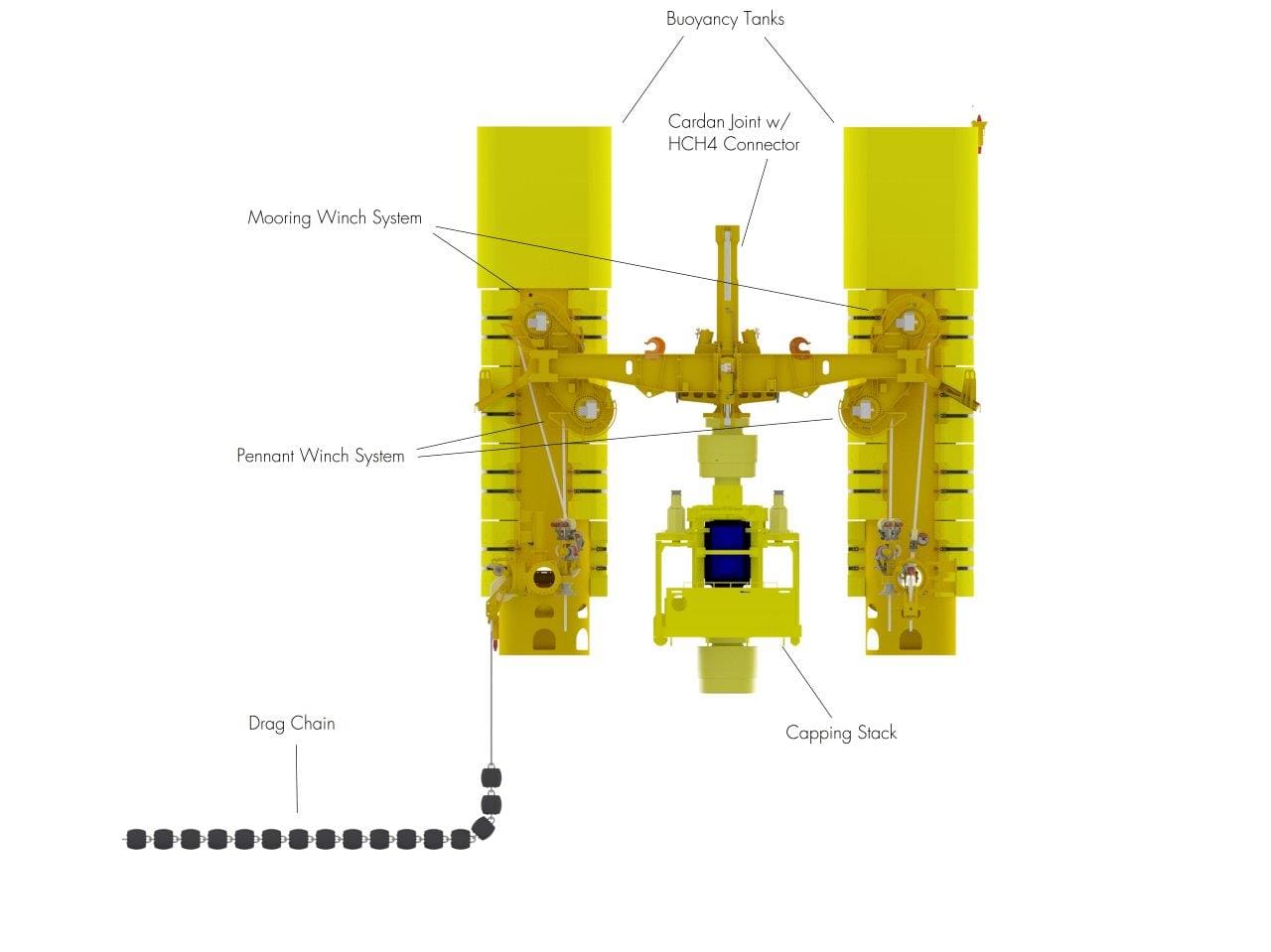Oil Spill Response Limited (OSRL) has announced that its latest development in subsea well capping technology is now available to its members. Designed specifically for scenarios where direct vertical access to a well head is not viable, the new Offset Installation Equipment (OIE) enables capping or related equipment to be installed at a safe distance from an incident.
Developed in collaboration with the Subsea Well Intervention Project (SWRP), OIE is now available to OSRL members through a Subsea Well Intervention Services (SWIS) supplementary agreement. Current OIE members include BP, Chevron, ConocoPhillips, ExxonMobil, Petrobras, Shell, Statoil and Total – all of which represent the founding members of SWRP.
The OIE’s arrival represents a true industry first and coincides with the final phase of SWRP, following completion of the related capping and containment projects, as OSRL’s Chief Executive, Robert Limb, explains: “For us, and all those involved in SWRP, the launch of the OIE is final piece of the puzzle and the culmination of over six years’ hard work. Since the formation of the project in 2011, we had one core objective; to design and build a comprehensive range of well capping solutions, with the flexibility to meet the current and future requirements of the industry. With the OIE now available, that objective is met.”
SWRP Project Lead Eli Bøhnsdalen adds “It is with great pride SWRP is completing its final delivery, the Offset Installation Equipment (OIE), an industry-first tool for capping a subsea well blowout where direct vertical access is unsafe. Saipem has been responsible for the design, fabrication and testing and it has been a tremendous effort from all parties to take this new development project to the finish line.
“Delivery of the OIE marks the end of SWRP, a cross industry cooperation between the eight major oil and gas companies. Since 2011, SWRP has delivered a wide range of tools to enhance the industry’s capability to respond to a subsea well incident. These tools are made available through OSRL subscription. SWRP has been a fantastic project in a unique setting, and those of us involved feel like we were part of something important”
OIE can be deployed up to 500m from an incident site and is suitable for use at a working depth of 75 to 600 metres. Importantly, OIE is also fully compatible with OSRL’s capping equipment, creating an end-to-end capping and containment solution suitable for almost all subsea scenarios.
The OIE will be stored and maintained in Trieste, Italy, by oil and gas industry specialist, Saipem, which has extensive experience operating in harsh environments, remote areas and deepwater.
In line with OSRL’s approach, each member organisation will be provided with training to enable their own experienced personnel to understand the capabilities of the system and operate the OIE during an incident. Following the end of SWRP, the International Association of Oil and Gas Producers (IOGP) through the Well Experts Committee (WEC) will work with OSRL to ensure that all stakeholders gain awareness of OIE’s capabilities as part of the process of promoting the adoption of good practice worldwide.
Commenting on this role, IOGP Executive Director Gordon Ballard says “We welcome the opportunity to promote this innovative OIE within the global upstream oil and gas industry. After all, SWRP itself came about through an IOGP initiative. Now, in that same spirit of collaboration and cooperation we want to ensure wide awareness among our global membership of the OIE’s unique capabilities.”
Additional Company Info
Oil Spill Response Limited (OSRL) is the largest international industry-funded cooperative. It exists to respond to oil spills wherever in the world they may occur, providing preparedness, response and intervention services. OSRL is wholly owned by most of the environmentally responsible oil and gas companies around the globe, and its membership represents the majority of the world’s oil production. It currently employs 300 people across nine locations around the world.





